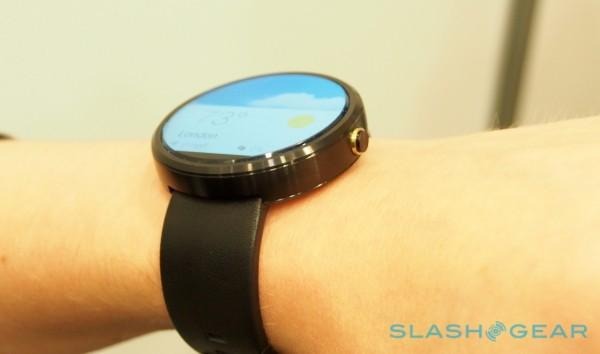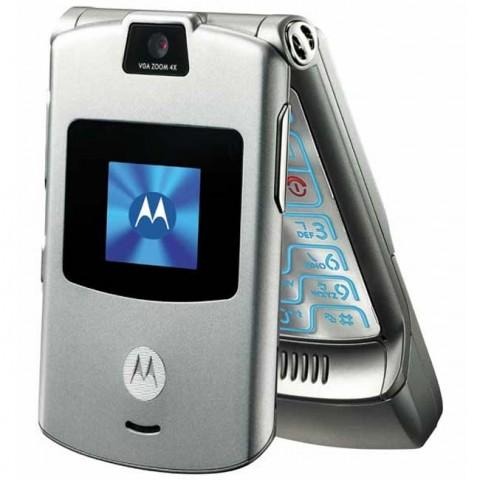The MOTO 360 Is Motorola's New RAZR
Getting wearable critics cooing is difficult, but Motorola seems to have struck a nerve with the MOTO 360. The circular smartwatch may, at its heart, be simply another Android Wear device, yet its enthusiastic embracing of a new form-factor and the technologies to enable it have already cast a shadow over models from LG and Samsung. For once, buyers are planning to hold out and wait for the Motorola option, something increasingly rare in a market dominated by Apple and Samsung. In fact, you have to go a long way back in Motorola's history to find anything similar: back to 2004, and the RAZR V3.
It's easy to forget how exciting the RAZR was back when it was first released. Jaw-droppingly slim, beautifully constructed, and introducing rare features like an EL-backlit laser cut keyboard, the V3 was a game-changer from the clunky plastic devices that sat alongside it on shelves. Demand was huge, despite the premium price-tag.
Compare the MOTO 360 with its Android Wear rivals from Samsung and LG, and it's not hard to see a similar gulf in appeal. They might all be smartwatches, and in fact all do the same thing – bring notifications and Google Now to the wrist – but with its circular display the Motorola puts a gulf between it and its square-screened cousins.

Rectangular displays are so commonplace now, it's difficult to get too excited about them any more. Increases in resolution have certainly proved to be selling points of recent flagships, like LG's G3, but with the limits of the human eye becoming more relevant, it's a tougher sell than, say, qHD to 720p and 1080p.
In contrast, a round panel is eye-catching simply by virtue of its shape. Those tempted by the MOTO 360 are unlikely to care too much about its resolution, drawn instead by the fact that it legitimately feels like a science-fiction prop come to life. Jaded as I can be about technology, seeing the circular screen come to life on my wrist when I tried Motorola's prototypes at Google I/O roused an instant jolt of geek-lust within me. Even staunch smartwatch skeptics told me they could envisage themselves wearing the MOTO 360 simply as a unique timepiece.
Motorola hasn't announced pricing for its watch yet. With LG and Samsung hovering around the $200-230 mark, the idea of the MOTO 360 coming in at $279 or even $299 doesn't seem too outlandish. However much I'd like it to be more affordable, I'm not sure a premium price will be too great a limit on Motorola's ambitions: the 360 smacks of halo-product, of test-the-water experiment as a way for the company to try out its circular panel technology.
The RAZR comparison presents a warning to Motorola as much as a promise, however. The flip-phone might have been one of the most successful handsets ever – the best-selling clamshell of all time, in fact – but it also saw Motorola a victim of its own hubris.

Sales of the RAZR were brisk, but Motorola failed to innovate quickly enough after it. As its rivals rose to the challenge of slimline, premium-feeling devices, with increasingly smart and user-friendly software, Motorola rested on its laurels and took the easy route: color variant after color variant, tweaking the RAZR's aesthetic but making no real updates even as interest slumped. By the time the RAZR2 and its siblings reached the market, users had moved on.
That lesson – that's what's good now will soon be overcome – needs to be a frequently-repeated one within the company. The MOTO 360 isn't Motorola's first smartwatch (its MOTOACTV was more akin to a fitness tracker, but I'd say it counts all the same), but it's the first that has the potential for broad appeal. Yet, even if demand is strong, there needs to be more than just different color cases and alternative watch straps if the 360 is to be the first of a successful family rather than just a flash in the pan.
What will come next is up for argument. Looking at the lingering pain-points of smartwatches, things like low-power displays that nonetheless are usable outdoors in bright sunlight, batteries that last more than a day or two, and form-factors that aren't clunky or geeky seem like obvious areas for improvement. Google looks to be keeping a tight rein on Android Wear, and so Motorola and its competitors will need to find other ways to differentiate around that ubiquitous feature set.
Android Wear Review: Your Wrist Just Got Smarter
Motorola has a little track record at that. While its rivals at HTC, Samsung, and LG were pushing customized skins and dozens of their own apps and services, the Moto X kept Android nearly stock and instead focused on improving things like battery life, voice recognition quality and convenience, and squeezing the most performance out of comparatively frugal specifications.
Translated to the wrist, and each of those skill-sets could have clear worth if Motorola (and new owner Lenovo) maintains its pace. As much as the RAZR is a high-point in the company's history books, it's also a stark reminder that coasting can be costly.
